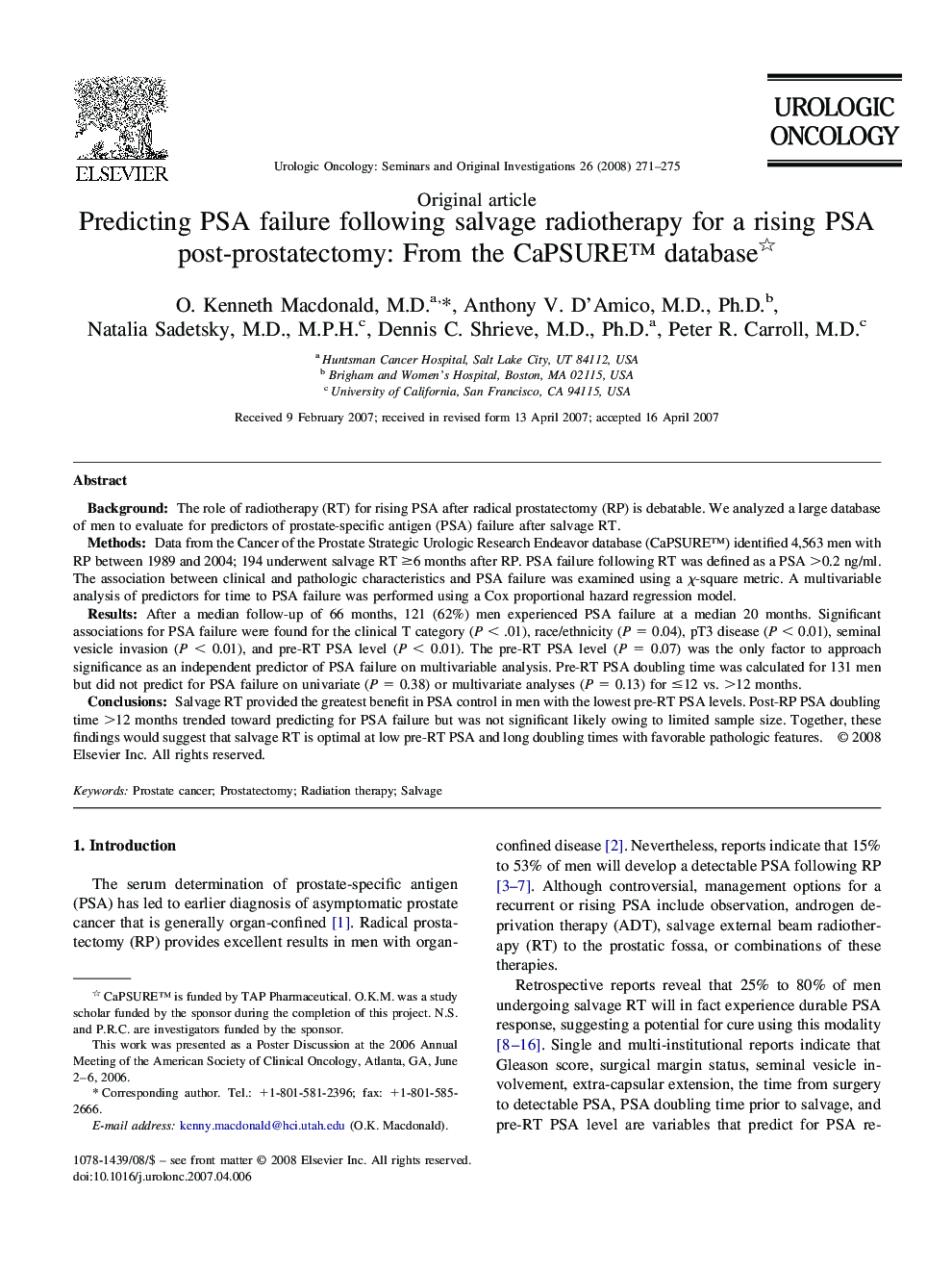| Article ID | Journal | Published Year | Pages | File Type |
|---|---|---|---|---|
| 4001665 | Urologic Oncology: Seminars and Original Investigations | 2008 | 5 Pages |
BackgroundThe role of radiotherapy (RT) for rising PSA after radical prostatectomy (RP) is debatable. We analyzed a large database of men to evaluate for predictors of prostate-specific antigen (PSA) failure after salvage RT.MethodsData from the Cancer of the Prostate Strategic Urologic Research Endeavor database (CaPSURE™) identified 4,563 men with RP between 1989 and 2004; 194 underwent salvage RT ≥6 months after RP. PSA failure following RT was defined as a PSA >0.2 ng/ml. The association between clinical and pathologic characteristics and PSA failure was examined using a χ-square metric. A multivariable analysis of predictors for time to PSA failure was performed using a Cox proportional hazard regression model.ResultsAfter a median follow-up of 66 months, 121 (62%) men experienced PSA failure at a median 20 months. Significant associations for PSA failure were found for the clinical T category (P < .01), race/ethnicity (P = 0.04), pT3 disease (P < 0.01), seminal vesicle invasion (P < 0.01), and pre-RT PSA level (P < 0.01). The pre-RT PSA level (P = 0.07) was the only factor to approach significance as an independent predictor of PSA failure on multivariable analysis. Pre-RT PSA doubling time was calculated for 131 men but did not predict for PSA failure on univariate (P = 0.38) or multivariate analyses (P = 0.13) for ≤12 vs. >12 months.ConclusionsSalvage RT provided the greatest benefit in PSA control in men with the lowest pre-RT PSA levels. Post-RP PSA doubling time >12 months trended toward predicting for PSA failure but was not significant likely owing to limited sample size. Together, these findings would suggest that salvage RT is optimal at low pre-RT PSA and long doubling times with favorable pathologic features.
